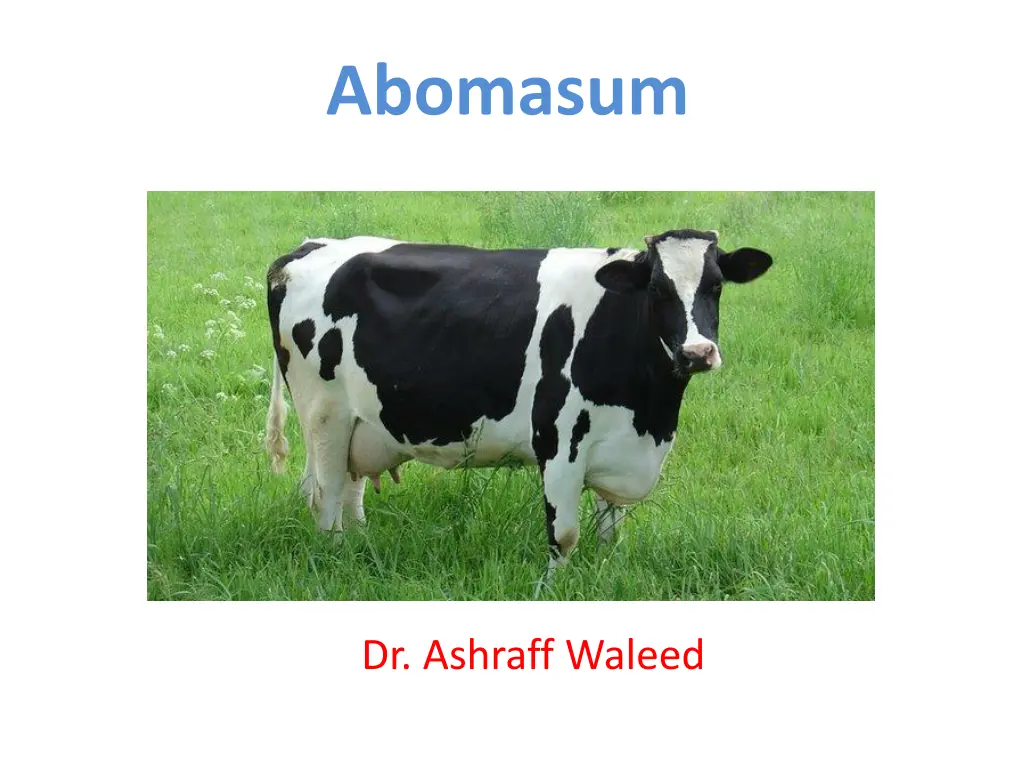
Abomasum: Causes, Mechanism of Action, and Surgical Conditions
Explore the functions of the abomasum in ruminants, including its role as a secretory stomach that produces enzymes and hydrochloric acid to digest proteins. Learn about common surgical conditions such as displacement, distension, torsion, ulceration, impaction, neoplasia, and pylorospasm. Discover the three syndromes related to abomasal displacement and their prevalence.
Download Presentation

Please find below an Image/Link to download the presentation.
The content on the website is provided AS IS for your information and personal use only. It may not be sold, licensed, or shared on other websites without obtaining consent from the author. If you encounter any issues during the download, it is possible that the publisher has removed the file from their server.
You are allowed to download the files provided on this website for personal or commercial use, subject to the condition that they are used lawfully. All files are the property of their respective owners.
The content on the website is provided AS IS for your information and personal use only. It may not be sold, licensed, or shared on other websites without obtaining consent from the author.
E N D
Presentation Transcript
Abomasum Dr. Ashraff Waleed
Abomasum causes causes Mechanism of action Mechanism of action pattern the abomasum is a 'secretory stomach'. This means that The abomasum unlike a ruminant's three forestomachs, pattern cells in the abomasum wall produce enzymes and hydrochloric acid which hydrolyse proteins in the food and also in the microbes mixed in with the food.
Abomasum The range of surgical conditions include: 1-displacement 2-distension 3-torsion (volvulus) 4-ulceration 5-impaction 6-neoplasia 7-pylorospasm
Abomasal displacement syndrome Three syndromes that involve movement of the abomasum are commonly recognized: 1-Left abomasal displacement (LDA) 2-Right abomasal dilation (RDA) 3-Right abomasal volvulus (RVA) Left displacements are significantly more common than either right dilation or volvulus and represent 85%-96% of all displacement conditions.
